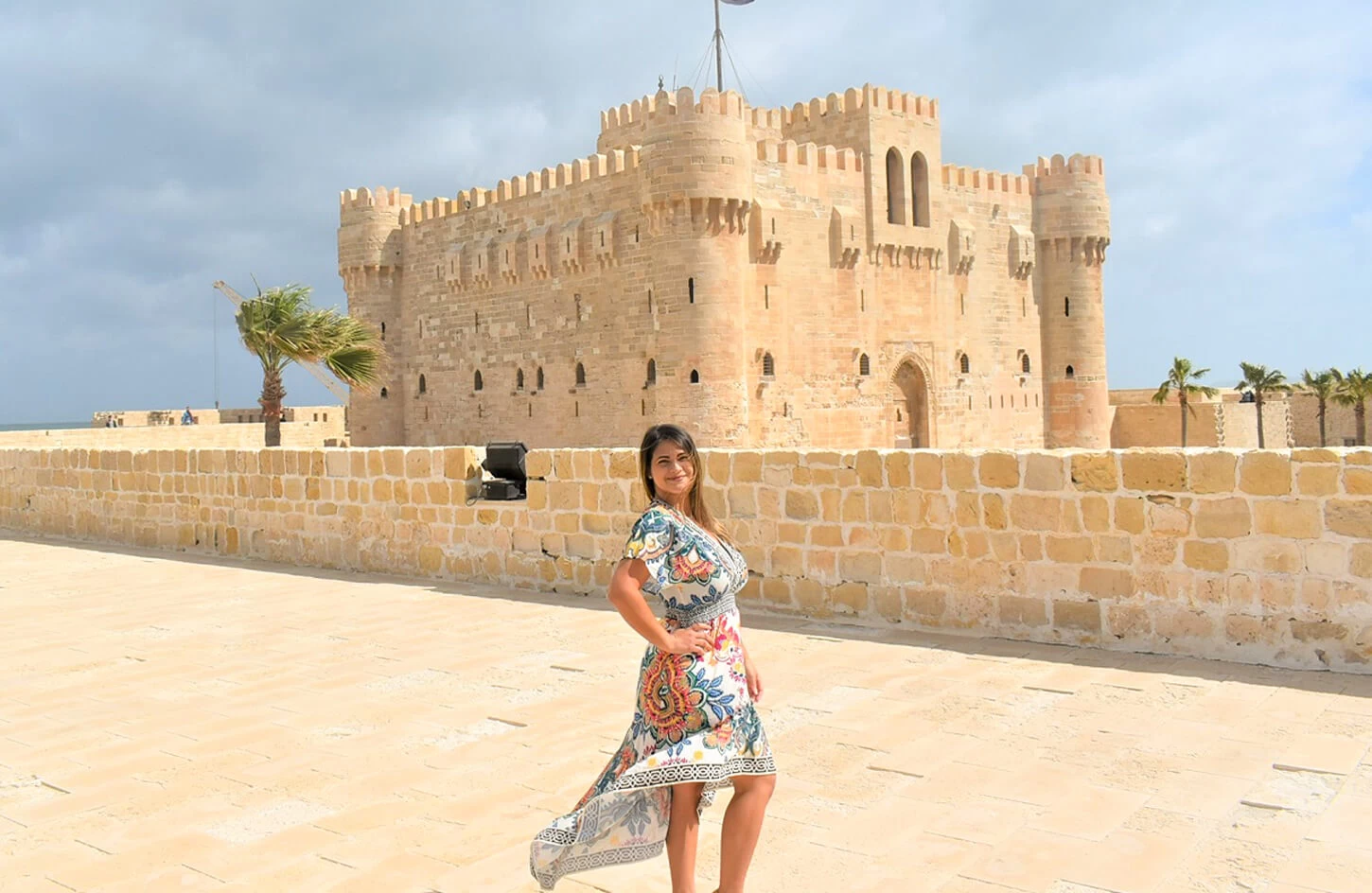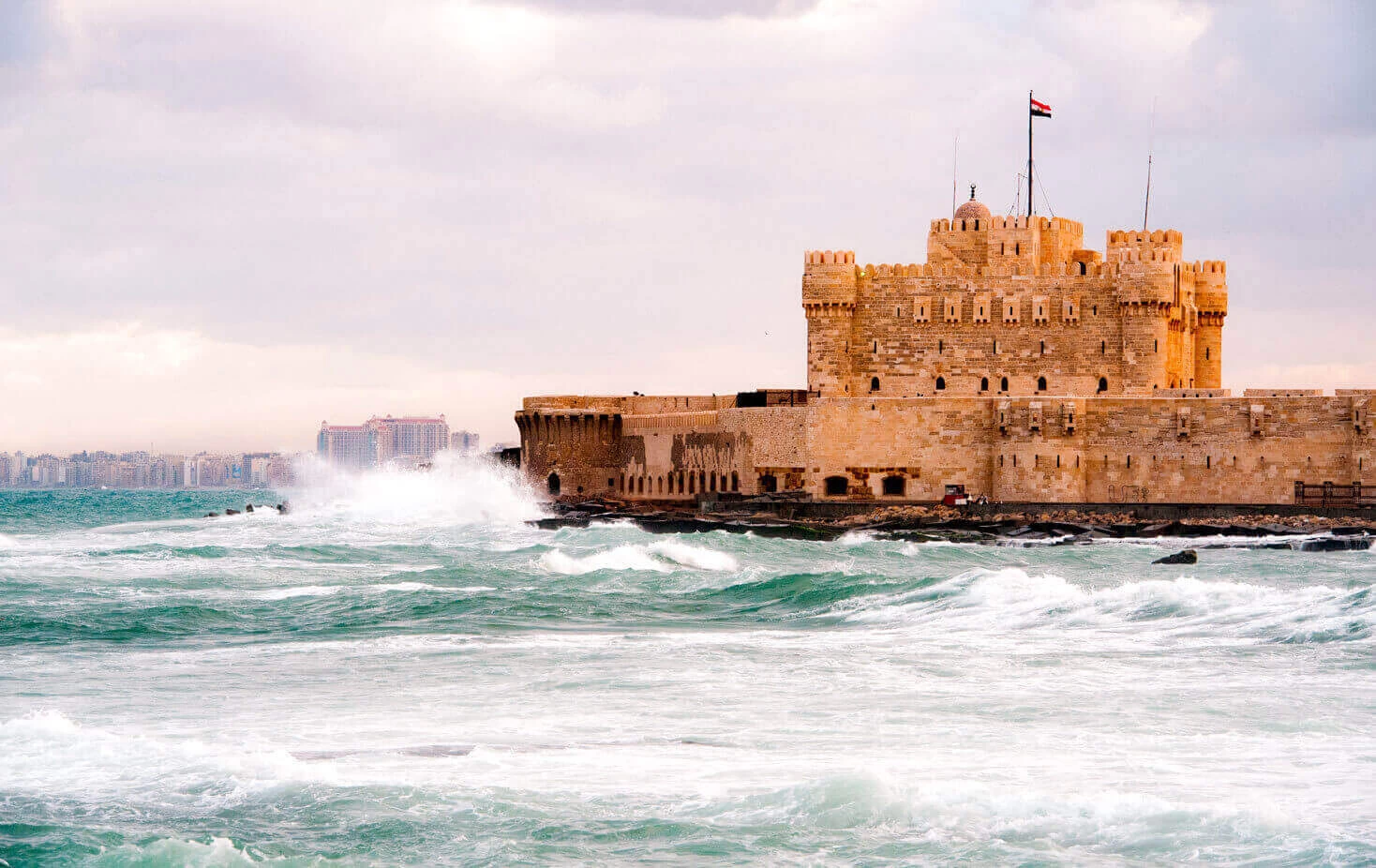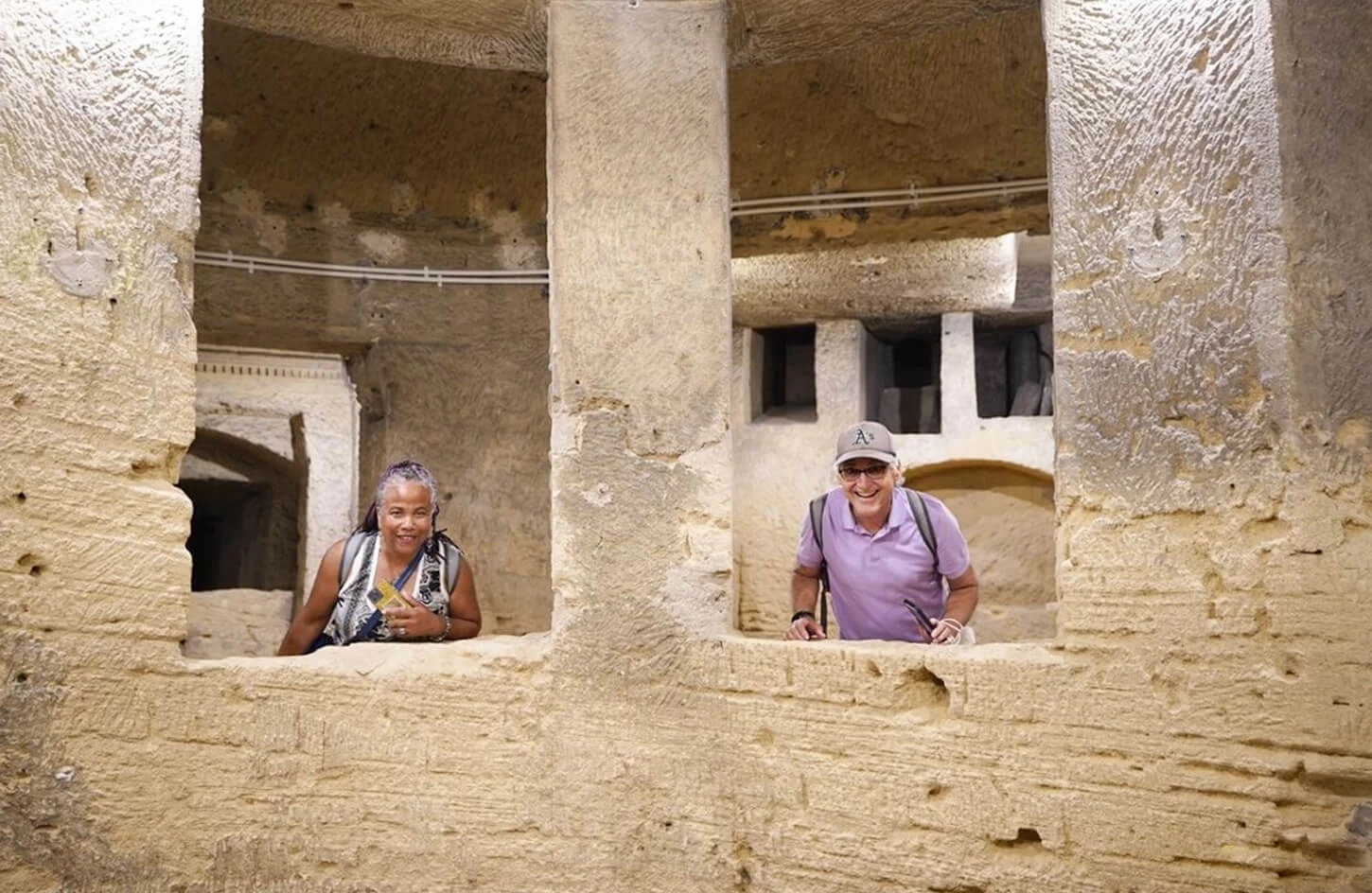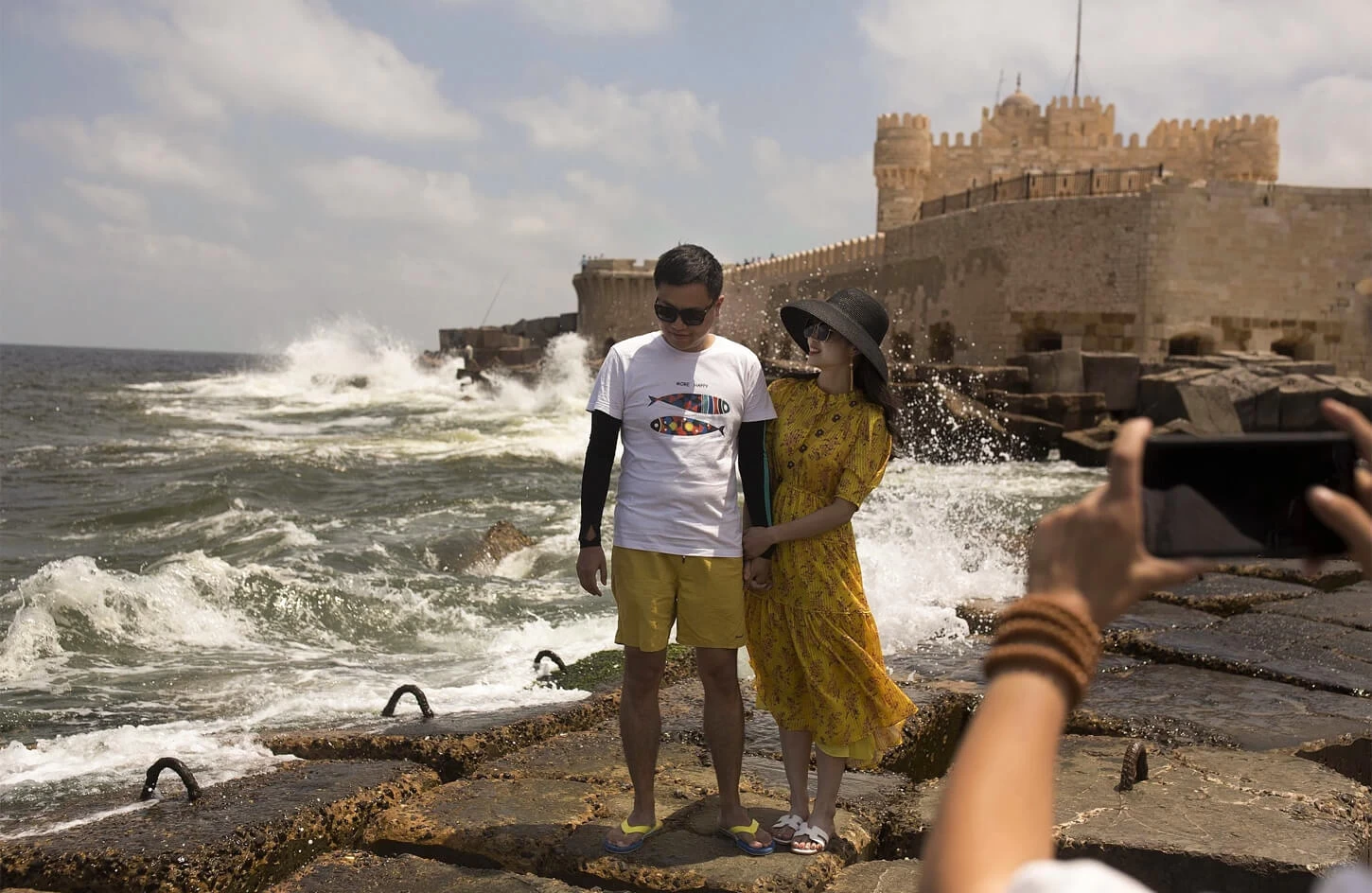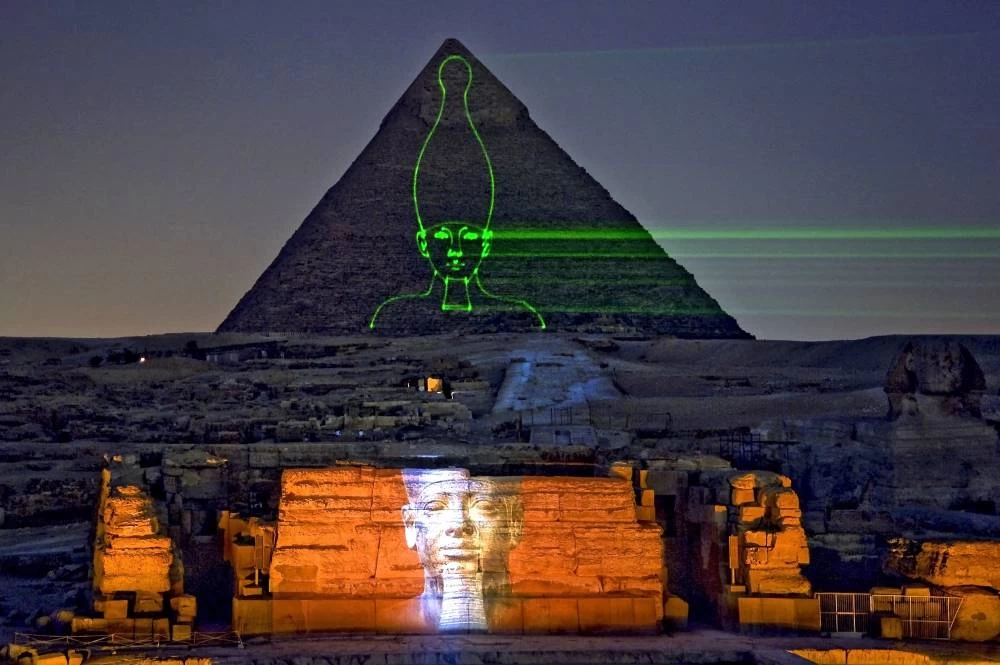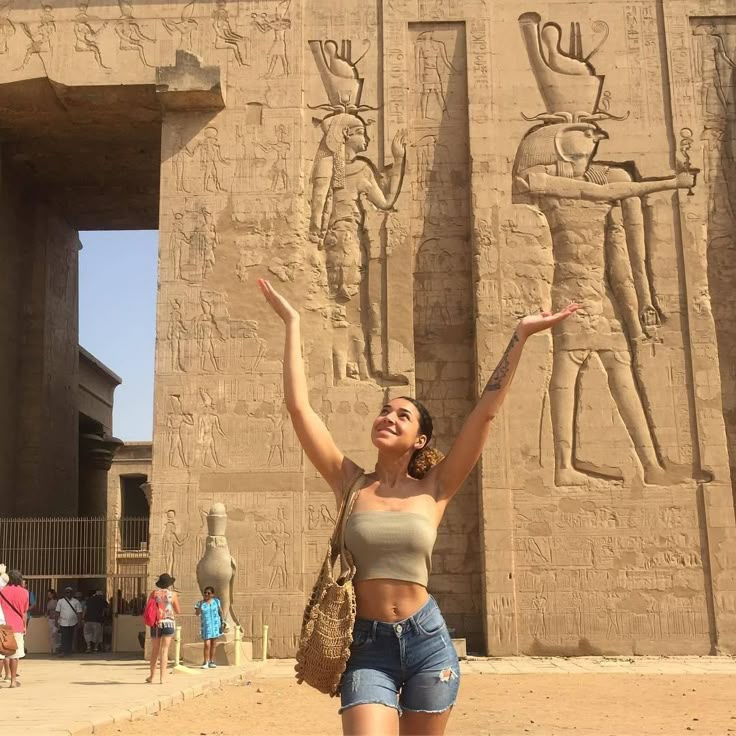Alexandria Library
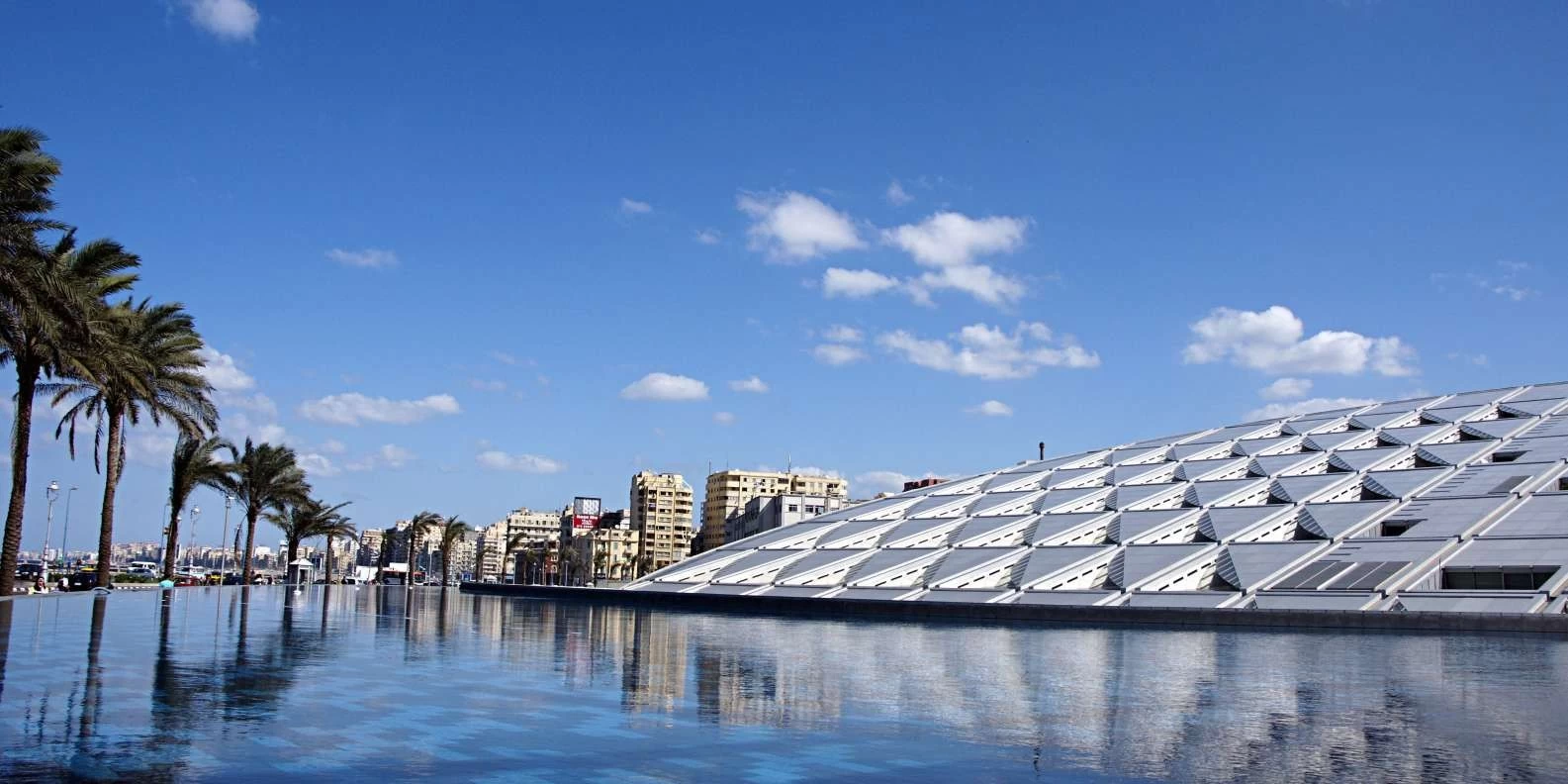
the history of the libarary of Alexandria
The Library of Alexandria, the greatest and most important library of the ancient world, was at the hub of knowledge preservation and advancement in ancient Mediterranean civilization. The city of Alexandria, Egypt, was home to the library, which was constructed by Alexander the Great in 331 BC. The library's history was that of glory, mystery, and drama, and it continues to resound today.
Origins and Early Period
The Library of Alexandria was established during the reign of Ptolemy II Philadelphus (283–246 BC) in the Ptolemaic Kingdom of Egypt. It was one aspect of a more extensive cultural and intellectual endeavor intended to make Alexandria the intellectual capital of the ancient world. The library was designed to hold a vast number of texts and manuscripts from across the Mediterranean, with a focus on the pursuit of knowledge in literature, science, mathematics, and philosophy.
The Museum of Alexandria, a research school that also accommodated the library, was also established side by side with the library. Scholars from all over the world, including the world-famous mathematician Euclid, the geographer Eratosthenes, and the philosopher Aristarchus of Samos, flocked to Alexandria to work and study.
The Collection of the Library
Its peak is said to have had several hundred thousand scrolls and books. The Ptolemaic kings were collecting works from throughout the known world. Any ship that arrived at port in Alexandria was required to hand over any scrolls or books to be copied, with originals being placed in the library. This grand endeavor enabled the library to serve as a repository of ancient knowledge.
The library's collection was a variety of subjects, covering a wide area:
Literature and Philosophy: Books by Homer, Plato, and Aristotle.
Science and Mathematics: Works by Pythagoras, Euclid, and Archimedes.
History and Geography: The works of Herodotus, Strabo, and other writers.
Medicine: The works of the great physician Hippocrates were most likely stored there.
Destruction and Decline
The history of the Library of Alexandria is marred by a series of events that led to its destruction and decline. The year it was destroyed is lost, and the reasons are disputed among historians, but several significant events are reported to have caused the demise of the library.
First Destruction (48 BC): The initial serious damage occurred when Julius Caesar's forces invested Alexandria in 48 BC. During the conflict, a conflagration had broken out within the city that is reported to have extended into the library and caused significant loss and damage to the collection.
Later Decline: Over the centuries, the library likely further deteriorated due to abandonment, loss of funds, and war destruction in other wars. In about the 3rd century AD, Emperor Aurelian is believed to have caused further damage when he invaded Alexandria.
The Final Blow (late 4th century): The ultimate destruction is usually credited to the advent of Christianity in the Roman Empire. In 391 AD, Theophilus, Patriarch of Alexandria, decreed the demolition of pagan temples, and the Serapeum, where part of the library's collection was kept, was demolished. From this point on, the library no longer existed as an institution.
Legacy and Influence
Although the Library of Alexandria is lost to us, its impact remains in the profound influence that it had on the intellectual development of the ancient world. The library was a center of learning and pursuit of wisdom. Scholars from across the Mediterranean came to Alexandria to study and exchange ideas, making discoveries in mathematics, astronomy, medicine, and literature.
The influence of the library is to be witnessed during the Renaissance, when the re-emergence of classical learning and ancient texts gave rise to an intellectual revolution across Europe. It was also the driving force behind the Bibliotheca Alexandrina of the present, which opened its doors in 2002 in Alexandria, Egypt. The modern library aims to continue the work of the ancient library as a hub of knowledge, research, and intercultural dialogue.
What can you see in Alexandria Library?
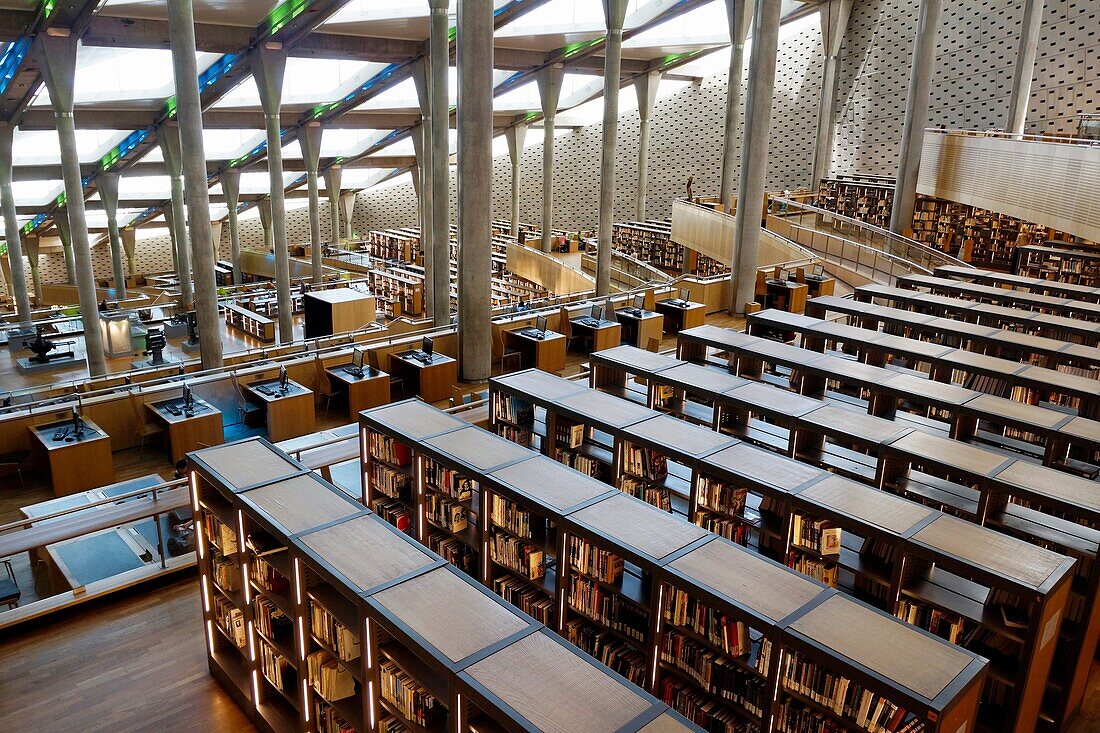
At the Bibliotheca Alexandrina (Alexandria Library), there is more to learn than books themselves. The library is a new cultural and educational hub constructed to honor the ancient Library of Alexandria. Some of the most significant things that you can see and experience at this fascinating place are:
1. The Main Library Hall
The Main Library is a grandiose architectural marvel, with its humongous spherical structure and slanted roof resembling a sunrise. It holds millions of volumes in numerous languages, giving users access to a wealth of material. The library and interior are elegantly crafted and architecturally well-planned, with the shelves curved over the curved walls of the hall.
2. The Digital Library
The Bibliotheca Alexandrina also boasts a massive digital library of thousands of digital books, articles, and multimedia resources at the visitor's fingertips. This section links the old wisdom with the new technology, where all kinds of digital content are provided to be accessed for study and research work.
3. The Specialized Libraries
There are various specialized libraries within the library for separate subjects:
-The Children's Library: A vibrant room with books, games, and learning materials for children.
-The Young People's Library: For teenagers and young adults, it has a stock of books and materials to amuse and motivate the youth.
-The Rare Books Library: It has rare and ancient manuscripts, like religious and historical books, and is a treasure house of knowledge for scholars.
4. The Manuscripts and Rare Collections
The library boasts a collection of ancient books and manuscripts, some dating back to the 14th century. You can search through ancient books on different topics, some of which are also digitized for public access.
5. The Planetarium
The Bibliotheca Alexandrina Planetarium offers you a complete immersive experience where you can study astronomy and space exploration. It offers 3D presentations, documentaries, and interactive exhibits that take you through an educational tour of the world.
6. The Museum of Antiquities
The Museum of Antiquities is located within the library complex and contains a collection of relics of ancient Egyptian, Greek, and Roman civilization. It stores sculptures, coins, pottery, and other relics from ancient times, adding worth to Alexandria's robust cultural heritage.
7. The Conference and Exhibition Halls
The library further acts as a workshop, conference, and exhibition hall. The various activities are carried out using different topics such as technology, science, culture, and literature. The complex also uses the venue to showcase exhibitions of modern art and host works from all over the world.
8. The Reading Rooms
There are several quiet reading rooms inside the library, which provide a peaceful environment to study and reflect. The rooms have books on different topics and are a space where visitors can do individual research or reading.
9. The Open-Air Roof
The library roof terrace is a window to the beauty of the Mediterranean Sea and Alexandria city with their stunning view. It is also an ideal place to relax, look, and watch the beauty of the library building from above.
10. The Alexandrina Center for Hellenistic Studies
The center is a specialist in Hellenistic studies of history and culture with facilities, lectures, and research services for ancient Greek history, language, and civilization.
11. The Art Galleries
The library further hosts galleries of art that arrange repeated exhibitions of Egyptian and foreign contemporary art. These host cultural events conducted within them throughout the year.
12. The "Great Hall of the Library"
This is a large room that shall be utilized as an environment to host occasional book launches, lectures, and discourses on politics, science, and literature from time to time. It's the center of cultural life as well as community activity.
How to Visit the Bibliotheca Alexandrina - A Traveler’s Guide
A trip to the Bibliotheca Alexandrina, the best cultural landmark in Egypt, is an adventure worth visiting during a one egypt day tour . Whether you are a book lover, interested in history, or simply keen on discovering the wonders of Alexandria, the library has something for you. This is a step-by-step guide on how to visit the Bibliotheca Alexandrina.
1. How to get to the Bibliotheca Alexandrina
Location:
The Bibliotheca Alexandrina is located in the heart of Alexandria, on the Mediterranean Sea, near the Corniche (the seafront road). Its location is:
Alexandria, Egypt, Shatby, El Horreya Rd.
How to Get There:
By Taxi or Ride-Hailing Apps: The easiest way to reach the library is by taxi or ride-hailing apps like Uber or Careem. It's a well-known landmark, so most drivers will know it.
By Public Transport:
Alexandria has a comprehensive city bus network all over the city. You can ride a local bus or microbus to the library complex (Shatby). Taxis are more suitable for visitors, however.
By Car: From Cairo or other provincial cities, follow the road signs towards Alexandria. The library is just off the seafront, so it's easy to find.
2. Opening Hours and Best Time to Visit
Opening Hours:
Saturday to Thursday: 9:00 AM - 7:00 PM
Fridays: Closed
Closed on major holidays (please call ahead for holiday hours).
Best Time to Visit:
The best time to visit would be during the winter months (October to April) when it is warm and nice outside. Summer is hot, and the library may have more tourists during that time.
Early morning or late afternoon hours are less crowded, so it is easier to visit without crowds.
3. Ticket Information
Entry Fee:
For International Visitors: Around E£ 70-100 (around $4-5 USD).
For Egyptian Nationals & Students: Usually E£ 10-20 (variable).
Additional Charges: There are sometimes additional charges for unique exhibitions, functions, or guided tours.
Information: Tickets may be bought at the door or online through the library's site.
4. What to Do and See in the Library
The Bibliotheca Alexandrina is a place that has something to see and do for every visitor, from tours of manuscripts that date back centuries to enjoying stunning views of the Mediterranean Sea. It is a must-visit during your Egypt tours
Visit the Main Library Hall: Be awestruck by the wonderful architecture of the colossal reading hall with millions of books lying out on levels. The looks, with the sun-shaped tilted roof, are a work of art.
Visit the Specialized Libraries: Drop by the Children's Library, the Rare Books Library, and the Young People's Library, each providing special collections and materials.
The Museum of Antiquities: Drop by ancient artifacts, such as Egyptian, Greek, and Roman artifacts, and fall in love with Alexandria's ancient history.
The Planetarium: Watch informative 3D presentations of astronomy and space science at the library's planetarium.
Art Galleries: Stroll through the latest art shows featuring works of Egyptian and foreign artists.
The Roof Terrace: Don't miss viewing the Mediterranean Sea views from the library building rooftop.
Conference and Cultural Events: Keep an eye out for public lectures, workshops, exhibitions, and performances that are likely to be programmed in the numerous halls and check out the library schedule.
5. Guided Tours and Services
Guided Tours:
You can book an organized tour to know more about the history, architecture, and collections of the library. Guides provide most personalized tours in Arabic or English. It is an excellent way of enriching your tour and gaining knowledge about the cultural importance of the library.
Audiovisual Tours:
You might be able to find audio guides or do-it-yourself tours for rent, where others might prefer simply to stroll on your own terms.
6. Other Attractions Nearby
When you are in Alexandria, there are some other close attractions to the Bibliotheca Alexandrina which are worth visiting as well:
The Alexandria Corniche: Walk by the sea and enjoy the harbor sights, cafe culture, and old landmarks.
The Qaitbay Citadel: An ancient 15th-century Mediterranean coastal fort with views of the harbor.
Pompey's Pillar: A Roman pillar and one of the tallest monuments in the city.
The Alexandria National Museum: A museum with antiquities of ancient Egyptians, Greco-Roman antiquities, and others.
7. Amenities and Facilities
Cafes and Restaurants: The library also has cafes within, which offer a resting place where one can sit and take a drink or snack and be in a position to observe the sea.
Bookstore: The library also contains a bookstore where one can purchase books, souvenirs, and other study materials.
Wi-Fi and Study Areas: Free Wi-Fi is available in public areas, and there are study rooms reserved for those who would rather read or conduct research.
8. Your Visit Tips
Wear Comfortable Footwear: With all there is to see, do be sure to wear comfortable footwear, particularly if you do plan to walk around various exhibitions and galleries.
Plan for Some Time: The library is huge, and there is so much to view. Plan on spending several hours at least there to take in the exhibits and the beauty of the building.
Respect the Quiet Atmosphere: The library is a research and learning center, so be quiet and respectful in your attitude while visiting.
The Library of Alexandria - Myths vs Facts
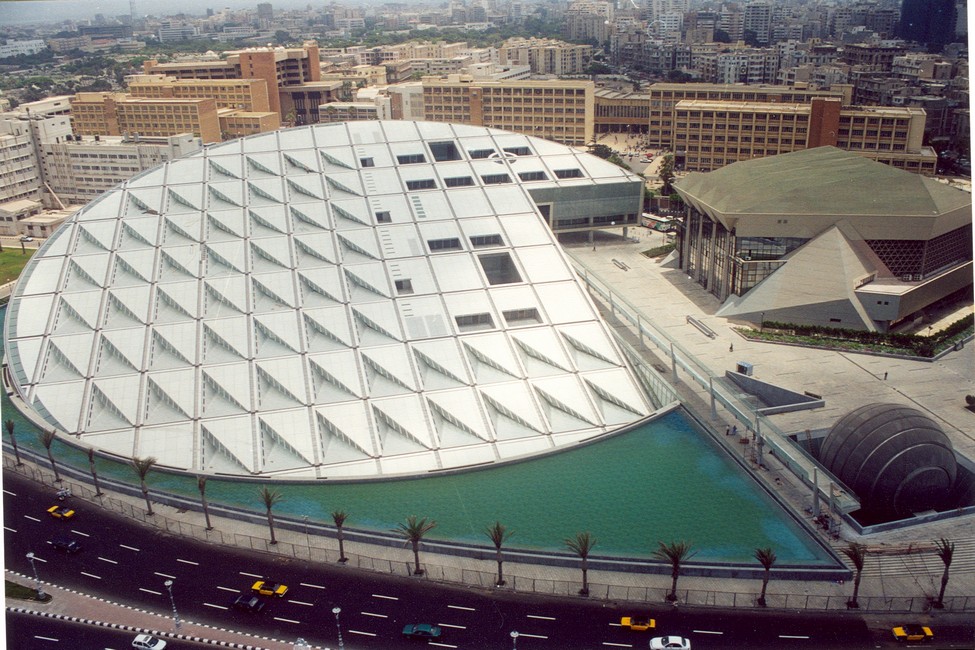
The Library of Alexandria is one of the most fabled and enigmatic places in human history. It has given rise to numerous legends and myths throughout the centuries, yet its actual history is largely shrouded in myth and speculation. In this post, we’ll separate myths from facts to give a clearer picture of the Library of Alexandria and its enduring legacy.
Myth 1: The Library of Alexandria Was Totally Wiped Out in a Single Catastrophe
Fact: The destiny of the Library of Alexandria has been painted as a single majestic drama, but the true facts are different. Indeed, the library had undergone severe destruction on many occasions in the course of centuries, but it was not reduced to dust in a single calamitous event.
The First Severe Destruction: In 48 BC, when Julius Caesar laid siege to Alexandria, the city was burned. The fire swept through the library, and it is estimated that it inflicted severe damage, but not enough to completely destroy the collection.
Later Destruction: The fall of the library continued over the centuries. The 3rd century AD, under the reign of Emperor Aurelian, suffered more loss during his campaign in Alexandria. Additionally, the Serapeum, a temple where part of the library's collection was stored, was destroyed in 391 AD by Theophilus, Patriarch of Alexandria, in the Christianization of Alexandria.
Gradual Decline: The library did not disappear overnight, but over the span of a few centuries of neglect, political instability, and cultural transformation.
Myth 2: The Library of Alexandria Had Copies of All Books in the World
Fact: Although the Library of Alexandria was the best in the ancient world, it was not even a repository of all books or collections of knowledge ever written. The library possessed an enormous quantity but was still limited by what existed then and political and cultural boundaries of the time.
Focus of Collection: The library attempted to collect writings of all in the ancient world, including Greek, Egyptian, and Persian works, yet all civilizations and cultures weren't represented. Writings of some regions were sparse due to political and pragmatic considerations.
Scope of Knowledge: The library did hold huge tomes on science, mathematics, philosophy, and literature, but a few books which we know were part of classical knowledge were lost in the process, and not all books reached Alexandria.
Myth 3: The Library Was Only About Books
Fact: The Library of Alexandria was not just a book repository—it was a research facility that was a hotbed of intellectual discussion and education. It was located in the Musaeum of Alexandria, a massive complex dedicated to the Muses (the goddesses of science and art).
Research Center: Intellectuals from all over the Mediterranean came to Alexandria to learn, share ideas, and joint research. The library did not merely stock books but also scientific instruments and other research equipment.
Eminent Scholars: Some of the best brains of the time were working in the library, such as Euclid, Archimedes, and Eratosthenes, who contributed immensely in geometry, astronomy, and geography.
Myth 4: The Library Was a Source of "Mystical" Knowledge
Fact: It was always this myth that Library of Alexandria contained mystical knowledge, secret scrolls, or lost science to man. Although there were many foundational science and philosophy books in the library, otherwise it was about mental and intellectual pursuit in the past.
Philosophy and Science Books: There were good books of philosophers like Plato and Aristotle in the library, authoring topics like ethics, logic, and metaphysics, and not mystical or esoteric.
No Trace of "Forbidden Knowledge": There is no suggestion that the library contained magical or secret books that were removed from history on purpose. Ancient wisdom can be lost in general over time and through cultural changes, not hiding secret things on purpose.
How the Library of Alexandria Shaped Ancient Knowledge and Culture
The Library of Alexandria, the greatest cultural center of the ancient world, was an important site of preservation, promotion, and propagation of knowledge in a wide range of fields. It had a part to play in the formation of ancient knowledge and culture, and its legacy continues to shape modern scholarship. Let us explore how the Library of Alexandria helped shape ancient knowledge and culture.
A Center for Intellectual Exchange
The Library of Alexandria was not a collection of books; it was an intellectual hub. Scientists and thinkers from all corners of the ancient world flocked to Alexandria, and Alexandria was made into a melting pot of ideas, philosophies, and research. It had extended its arms to the entire Mediterranean world, and it served to bring together different intellectual traditions.
Scholars from various cultures: Egypt, Greece, Mesopotamia, and other locations' scholars would go to the library to learn, interact, and share ideas. Intellectualism among cultures was influenced by sharing ideas, and this resulted in advancements in various areas.
Illustrious Figures: The library was home to some of the most brilliant minds the ancient world had to offer, including Euclid (the grandfather of geometry), Archimedes (famous for his works on mathematics and physics), Eratosthenes (measurer of the Earth's circumference), and Hipparchus (early astronomer and geographer).
Building Science and Mathematics
The Library of Alexandria was the center of scientific and mathematical progress in Hellenistic times, and all of the fundamental ideas of modern science were born there.
Euclid and Geometry: Euclid, perhaps the greatest mathematician of all time, worked in the library. His "Elements" became one of the most widely read books for over two thousand years and formed the foundation of geometry. His mathematical logic methods and his use of deductive reasoning were the forerunners of much mathematics today.
Archimedes and Physics: The other renowned Greek scientist, Archimedes, also contributed to the intellectual atmosphere of the library. His research in mathematics, physics, engineering, and hydrostatics formed the basis of essential principles of modern science, and his work continues to motivate engineers and physicists even today.
Eratosthenes and Geography: Eratosthenes, a scholar in the library, was able to compute the Earth's circumference with precise accuracy using the principles of geometry. His book formed the foundation of geography and was a paradigmatic example of the scientific method.
Preservation and Translation of Texts
The greatest contribution of the library to culture and knowledge was the large collection of written material from all over the known world. It contributed to the preservation of ancient works, some of which would otherwise have been lost. The library also facilitated translation and spread of knowledge.
Textual Preservation: The Library of Alexandria sought to gather as wide a range of texts as possible, particularly Greek and Egyptian books, and preserve them for the ages. Many such ancient Greek and Egyptian texts were copied and preserved in the library, surviving even after the burning of the library itself.
Translation Movement: Books were translated into Greek and other languages by scholars in the library, enabling the transmission of information across the Mediterranean. This enabled Greek philosophy and scientific discoveries to be disseminated, particularly in the Roman Empire.
Contributions to Philosophy
The Library of Alexandria was also where serious philosophical study, particularly of Greek philosophy, occurred. This is where philosophers read Plato, Aristotle, and other great thinkers whose works would shape Western thinking.
Philosophical Scholarship: The library was home to scholars representing the different schools of philosophy, including Stoicism, Epicureanism, and Platonism. Scholars debated and discussed what enriched and developed the philosophies that would inform Western intellectual thought for centuries to come.
Influence on Later Philosophers: Many of the philosophers who worked in or were influenced by the library would go on to be leading figures in later intellectual movements. Plotinus, one of the finest of the Neoplatonists, was heavily influenced by the philosophical school that was preserved in the library.
Contributions to Medicine and Biology
The Library of Alexandria was also a highly significant medical and biological center of learning, two sciences that in the ancient world were intimately related. These sciences were taken by library researchers to an early stage.
Hippocrates and Medical Writings: The library housed the writings of Hippocrates, the "father of medicine," whose works on medical ethics and practice were the foundation of Western medicine. Later physicians, including Galen, studied his writings in the library and contributed to the spread of the science of medicine.
Pioneering Research: Scientists also contributed to anatomy and physiology. The work on biological diversity and the formation of early medical treatments laid the groundwork for the later developments in medicine.
Contribution towards the Development of Astronomy
The Library of Alexandria was a focal point in the history of astronomy. It was where the heavens were studied, and where most of the great ancient astronomers made their contributions to the field.
Hipparchus and the Star Catalog: Hipparchus, one of the most famous scholars of the library, made the first star catalog that included more than 800 stars and began systematic observation of the sky.
Geocentric Model of the Universe: The library also preserved and promoted the geocentric model of the universe, where the Earth was placed at the center of the universe. This model, although later superseded by the heliocentric model, was at the leading edge of the advancement of astronomy for a few centuries.
Cultural Integration and Influence
The Library of Alexandria was also a cultural center, which fostered intellectual interaction and cultural assimilation in the ancient Mediterranean cosmopolitan world. The fact that it was situated in Alexandria, founded by Alexander the Great, placed it in the middle of a chain of cultures.
Greek, Egyptian, and Eastern Influences: The library brought together Greek, Egyptian, Persian, and other Eastern cultural traditions in a fertile field for the cross-fertilization of knowledge and ideas. The library's collections included works from Egypt, Greece, Persia, India, and other parts of the known world.
Educational Hub: Not just scholars but students too visited the library. Various influential people from across the whole ancient world came to Alexandria with an attempt to learn and study. The library acted to spread Greek philosophy and science to the whole Mediterranean world, especially during the Hellenistic age and even the Roman era.
